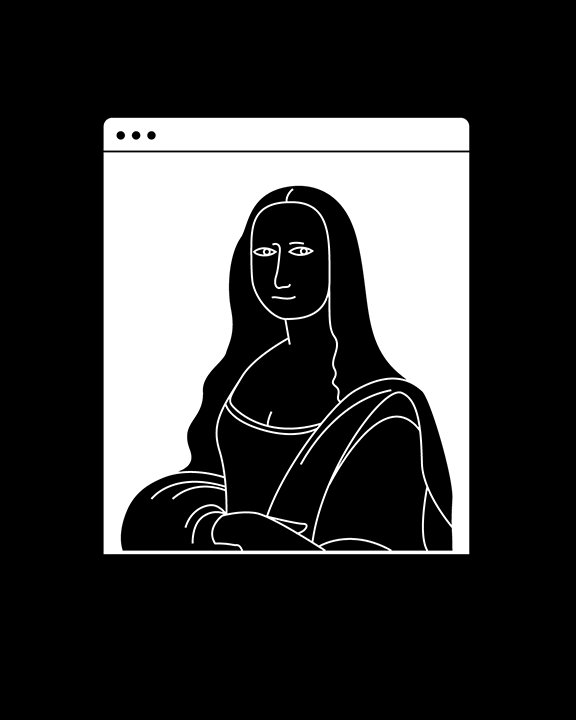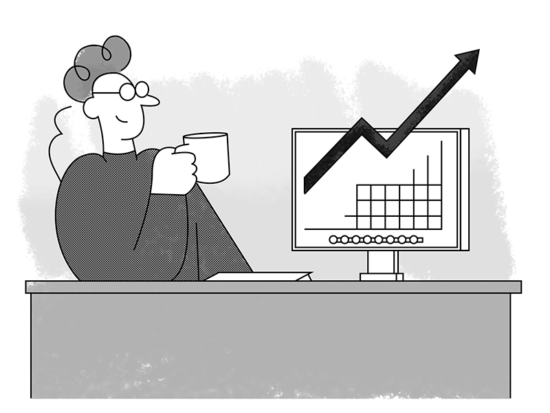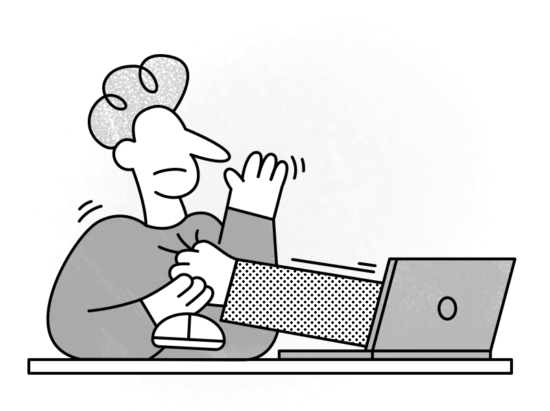As a (hopefully!) respected designer, do you honestly believe that having a portfolio on Behance or Dribble is enough?
C’mon, you can’t be serious.
Sure, having a profile on these sites can help you find your place in the community, but if you want to work for the big names in the industry, you are far from done.
You need to build a portfolio website.
Here’s why.
First of all, having a portfolio website allows potential clients to find out more about your skills and capabilities. Always remember that clients have a limited amount of money, and they want to spend it on a credible, responsible, and TALENTED designer that will give them what they want.
Second, you need to distinguish yourself from fellow designers, not only through the projects you have done but also through the design of your portfolio. What better way to show your creativity than to invest time, and craft into creating your online portfolio?
And third, posting on Behance and Dribble may seem like a good step that will get your gigs, but some clients haven’t even heard about these platforms (shocking, right?!). Also, if they are familiar with these sites, they are not sure where to look or how to choose the best one.
Which is why you need to create an online portfolio that will compliment your career, and style.
But, as it usually goes, there’s only one problem.
There are literally millions of online portfolio sites. Designers from all around the world are all trying to win the hearts of potential clients, the same way you are. Which is why you must create a never-before-seen portfolio clients won’t be able to miss.
To help you create a visually impressive portfolio that will convince recruiters you are The One, we decided to list best online portfolio sites we found on Awwwards.com (and the online world), share why these sites are the best, and give you a few tips on what you can learn from them.
Feel free to steal these ideas!
Let’s get started.
Disclaimer: Before you start reading the rest of the post, keep in mind that we have also listed design agencies’ portfolios, not only personal websites. There’s a lot you can learn from these studios, believe it or not.
Create profiles of your potential clients
Let’s say that you are a web designer, looking for your next big gig.
You consider yourself lucky because there are thousands of companies that look for web designers. From small cupcake shops that need a website to worldwide-known moguls like Nike, or IBM.
But, before you start designing your portfolio website, you need to ask yourself which companies you are interested in working with, and who your potential clients can be. For example, are you aiming for the big-name brands or are looking to help local small businesses and startups build their websites?
Whatever the answer may be, you need to create profiles of the “ideal” clients so you can adjust your portfolio design to them.
Here’s how a freshly built #00F design agency from Milano, one of the best online portfolio sites, made sure that their site worked for their potential clients. On the company’s Work page, #00F decided to add a gif of a character from a TV show “How I Met Your Mother”, Barney. You can see it just below the projects the agency listed 一 there’s Barney, winking at you and there’s a text that goes over the gif, saying “Let’s work together!”
The reason why this move is pretty genius (even if you don’t find it that appealing) is that #00F agency immediately made clear with whom the company wants to partner up 一 innovative, hip, modern companies, led by creative Millennials who are willing to do anything to stand out on the market. Think about it 一 a 55-year-old law firm owner probably wouldn’t recognize Barney, think it was funny, and hire #00F.
Think through the homepage content (and the design)
Depending on who your potential clients are, you’ll choose to build a different homepage.
For example, if you are interested in working with tech startup companies, whose owners are, once again, creative Millennials, you might want to include jaw-dropping animations while keeping the navigation quite minimalistic. If you are interested in working with century-old companies that are all about the tradition, you might want to stay from the neon-colored homepage and Tom & Jerry gifs.
Nevertheless, we wanted to give you some examples of the best online portfolio sites their homepages to inspire you.
Let’s start with the ones with the minimalistic design.
First off, there is Kzkr.fr, Valentin Karkouz’s portfolio site, which is more of a business card that a personal website 一 there’s no menu in the top right or left corner, no logo, no funny animations 一 just the black background with a white typeface. The focus of this portfolio is on the designer, and the work he has done on Github and Dribble.
Next, there’s Juraj Molnár’s portfolio, which is a one-pager. It has navigation placed on the right, but there are no separate pages for the About or Projects content. Just a simple, well-designed black background website with superb animations.
And then, there’s Stockholmdesignlab.se, a digital agency portfolio that is anything but minimalistic. It shocks thanks to its flashing images, leaving the visitors stunned and intrigued.
In the end, it’s up to you to create the homepage you think potential clients will find appealing and attractive.
Three tips to help you design a homepage
If you are having a hard time deciding on what your homepage design should look like, here are three guidelines you should always have in mind:
- If you click on all the websites we have mentioned in this article, you’ll see that when you click on the logos, you’ll reach the sites’ homepages. Keep in mind that 36% of visitors click on the company’s logo in the corner to reach the homepage, so don’t forget to add your logo.
- Even if you want to keep your website’s design super polished and minimalistic, it doesn’t mean that you can’t change the elements in the menu. Instead of adding About, Blog, Projects and Contact pages, play with the pages, and include a new one. The new page can serve as your professional guide, in which you’ll explain the rules you stick to when working with clients. Beaubourg team did something similar by including the page Ethos.
- Projects need to be your main focus, which is why you need to list projects on the homepage and impress those curious recruiters. The “what you see is what you get” is always the best approach when it comes to the homepage. (The good news is that we knew about this rule when we were creating Resonant, our portfolio WordPress theme. Resonant has a huge slider on the homepage, and just below that slider, there’s a place for all your projects. It looks pretty cool. You can check out Resonant’s demo, to see what we mean.)
Don’t flood the About page with unnecessary information
If there’s one thing you shouldn’t do in your portfolio that is to add unnecessary text, and photos to your About page. It’s like we have mentioned in the article Create a Work of Art: 8 Tips for Making an Impressive Online Portfolio 一 it’s better to keep the content simple, and focus on creating an extraordinary and groundbreaking design.
So, what to include in the About page? Well, we would advise you to write no more than 10 sentences about who you are, what you do, and have done. You can even mention some big-name brands to boost your credibility, if you want to, or include information about the exhibitions you’ve done and the projects you participated in. If you need a bit of inspiration, here’s how Ada Sokół, an artist and designer, created her About page. You’ll get why we chose to list this website as a part of the best online portfolio sites list.
Blog away
If you haven’t read our post on why you should include a blog in your online portfolio, it’s time you do so.
The reason why we dedicated a whole article to a simple thing like a blog is that this page on your website can help you stand out. Nowadays, there’s not a lot of best online portfolio sites that have this section. By including it in your personal site, you’ll show recruiters just how dedicated, and persistent you are (because having a blog require consistency in posting).
If you have no idea what you should post on your blog and are not as eloquent as Tom Froese from the Illustration Age, you can check out Peter Gregson’s blog.
Peter Gregson is a design studio that uses a blog to post information about studio’s latest work. Kinda like a Project page, but with just a bit of explanation about the projects and photos. The agency created a blog that is focused on the images, not the text. And you can do it, too!
Close the deal using the Contact page
A Contact page should not be a page you design last and forget that it’s there. Just the opposite 一 you should spend quite some time thinking about its design.
Here’s why.
When potential clients go through your Projects page, the About one, and browse through your online portfolio a bit, if they like what they saw, they are going to go straight to the Contact page, looking to reach out to you in a matter of seconds, which is why the process of contacting you should be a piece of cake.
So, a Captcha-free contact form with some interesting CTA button can do the trick. But, a humorous attention-grabbing photo or intriguing copy will close the deal. Here’s what we mean.
If you want to “embellish” your Contact page a bit, but are not sure how, check out how The Great, digital agency, and its Contact page. The team included the “Say Hi” copy with a twist 一they decided to add the “or Bonjour/Guten Tag/Salut”, insinuating that they would work partner up gladly with European clients, and have no problem communicating.
Or…
You can include some heart-warming picture of you as a kid, like the Vlnc studio did.
Or something you believe will get potential clients’ attention. You get the picture.
Get to work!
What are you waiting for?
Now that you have read all these tips, and hopefully, got some inspiration, you should feel ready to build your online portfolio.
We wish you good luck!








